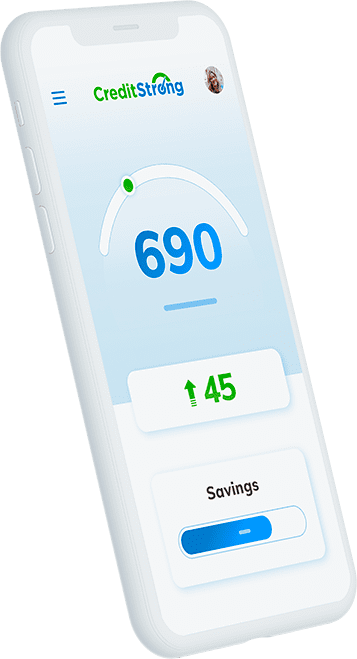How Long Does a Collection Stay on Your Credit Report?

Build strong credit
while you save

An original creditor owed an unpaid debt will often “charge off” a credit account and send it to a debt collection agency. Most collections will remain visible for seven years on your credit report.
Evidence of the collection account remains on your credit bureau report regardless of whether the old debt remains as an unpaid collection account or if it was paid through a debt settlement agreement.
How Do Collections Affect Your Credit Score?
The exact impact of any particular collection account reported by a lender or agency on your numerical credit score generally cannot be determined or calculated. This uncertainty stems from many potential related factors and variables such as:
- Whether the effect is assessed using the FICO or VantageScore calculation model and the particular version used.
- The consumer’s existing credit score at the time.
- Other accounts within the credit and payment history, i.e., unpaid credit card debt or student loans.
The most recently released versions of FICO and VantageScore models now lessen the negative impact that paid collection accounts have on credit scores.
FICO reported that collections appearing on your credit report will “almost certainly” reduce your FICO Score. Furthermore, FICO explains that more recent collections have a more detrimental effect than older entries.
Generally, collections within the past two years have had the most significant impact.
Those with higher scores usually experience more substantial decreases from reported collection accounts. Consider the following simulated actions involving FICO Score 9:
Example: Impact of Collections Based on Existing FICO Score
| Consumer A | Consumer B | Consumer C | |
| Existing Credit Score | 607 | 669 | 710 |
| 30-day collection | 580 (-4.4%) | 635 (-5.1%) | 655 (-7.7%) |
| 60-day collection | 570 (-6.1%) | 600 (-10.3%) | 540 (-23.9%) |
Source: FICO
As shown above, the significance of the decline increases when current credit scores are higher.
Does it Make Sense to Pay Off the Collection Account?
People seeking to improve their credit score often experience confusion about whether to pay collection accounts — particularly those reported a few years earlier. As was aforementioned, collections and other negative entries are removed from your credit report after seven years.
Credit report entries generally have less impact on a credit score as they age; therefore, paying off an older collection debt might not have any positive impact on your credit score. FICO confirms that doing so will not harm your FICO score.
The National Foundation for Credit Counseling (NFCC) explains that past “sitting” collections may expose you to a lawsuit. Here, a creditor might bring a lawsuit to pursue a court’s judgment allowing them to impose wage garnishments or other legal means of collection.
The NFCC says that creditors may file a lawsuit to collect unpaid debts if it’s within a state’s statute of limitations. The statute of limitations or deadline for bringing a lawsuit against a debtor is based on state law, which could range from three to 15 years.
Taking certain actions involving existing debts may “restart” the statute of limitations. For example, making a payment on an old collection account or entering a repayment agreement may “reset” the time frame for filing a lawsuit.
What Happens to Your Credit Score Once Collections Fall Off It?
The Fair Credit Reporting Act (FCRA) requires that original lenders or debt collectors that report unpaid accounts to credit reporting agencies include the original date of delinquency that represents the “starting point” for the seven-year period when the account is removed.
Be aware that an entry indicating a consumer’s bankruptcy and potential credit accounts that were discharged under the bankruptcy might remain on the credit report for 10 years.
What is the potential impact on your score that results from a collections account that reaches the seven-year mark and is removed from your credit report? In many cases, the removal of bad credit entries will result in some improvement in your credit score.
Experian reminds consumers that a collection account is most detrimental to your credit score in the first couple of years after being reported. Therefore, by the time the collection is removed after seven years, it will likely trigger a “minor increase” in your score.
Ideally, in the years since the collection account appeared on your credit file, you will have taken positive steps toward improving your credit history that has largely offset the older negative entries.
Treatment of Medical Debt Collection
Late payments and collection accounts involving medical debt may be subject to different credit reporting rules based on the National Consumer Assistance Plan (NCAP). Launched in 2015, the NCAP imposed changes to the credit reporting of medical collection accounts.
The NCAP prevented credit reporting of medical debts for 180 days. The waiting period on reporting this negative information allowed sufficient time for applying any medical insurance payments that might have been disputed or otherwise delayed.
Also, removal was required of previously reported medical debt collection entries that were paid by insurers. FICO and VantageScore, the two primary companies that create formulas used for calculating credit scores, have also changed their approach involving medical debt.
Beginning with FICO’s Score 9 model, the adverse impact of reported collection agency activity related to medical debt was reduced. FICO estimated that consumers whose only adverse credit report entries were related to medical debt got roughly a 25-point credit score boost.
VantageScore 4.0, the most current VantageScore version, now differentiates medical collection accounts and comparatively “lessens or minimizes” the impact such negative information has on consumer credit scores.
Can I Get a Collection Account Removed Sooner?
The credit reporting company, Experian, explained that the removal of collection agency entries contained within a consumer’s credit reporting agency file may only occur in two ways.
The first grounds for removal of a collection account from your credit history occurs routinely after seven years elapse from the initial delinquency date. The original delinquency date signifies the first missed payment and the last time the account was brought current.
The other grounds for removal involve an account that is determined as incorrect or containing erroneous data. Based on the nature of the inaccuracy, the account could be modified instead of totally removed.
Keep in mind that collection accounts remain on your credit report for seven years regardless of if the debt was ultimately paid to the lender. An incorrect (inaccurate) collection account removed before seven years may not impact other entries associated with that account.
For example, an entry reported by a third-party debt collector that was removed early based on being inaccurate might have other remaining activity related to that particular account, such as the originally reported late payment(s) reported by the initial creditor.

Ways to Improve Your Credit
Having unpaid credit accounts forwarded to collections that contribute to a poor credit score may inspire you to explore opportunities for improving your credit. Often, consumers with collection accounts or even a bankruptcy can rebuild their credit in only a couple of years.
Taking positive steps such as obtaining a credit builder loan or a secured credit card represents steps in the right direction. A secured credit card typically has a security deposit that equals the card’s credit limit and allows for consumers to demonstrate financial responsibility.
Keep in mind that proactively using types of improvement strategies can coincide with the declining adverse impact of older collection accounts, resulting in a cumulatively powerful positive effect.
Use CreditStrong
CreditStrong, a division of Austin Capital Bank based in Texas, is a leading financial services organization that offers excellent options for a consumer seeking ways to rebuild credit.
CreditStrong offers credit builder loan products that can affordably build credit.
A credit builder loan is a form of installment loan where the funds that are ordinarily provided to an approved borrower upfront are instead deposited in a savings account where they remain for the duration of the loan term.
The “borrowed” funds are well-secured, as CreditStrong accounts are properly FDIC-insured.
Next, the borrower makes manageable, fixed monthly payments toward the loan balance. During the term of the loan, CreditStrong will report your payment activity to Experian, Equifax, and TransUnion, the three primary credit reporting agencies.
The loan can yield excellent results, as FICO’s credit score calculation model is most heavily influenced by a consumer’s payment history. After making all of the loan payments, the original loan funds are then made available to you.
Keep Your Credit Utilization in Check
Another factor influencing your credit score is the credit utilization rate or ratio, which pertains primarily to revolving credit card accounts. The rate, expressed as a percentage, represents the amount of money currently borrowed in proportion to the overall amount of available credit.
Consider the following example:
John Smith has one credit card with a $200 balance and a second one with a $300 balance. Assuming that both cards have a $1,000 limit ($2,000 total), the credit utilization rate (CUR) would be 25%.
$500 total balances / $2,000 total credit limit = 25% credit utilization rate
Generally, a “good” utilization rate is one below 30% and rates below 10% are excellent.
Make On-Time Payments
Consumers seeking to improve their credit score must remain focused on making timely payments on all financial accounts. The following summary illustrates how payment history represents the single, most influential factor in FICO score calculations:
- Payment history: 35%
- Amount of debt (owed): 30%
- Length of credit history: 15%
- Recent (new) credit accounts: 10%
- The “credit mix” or various credit accounts: 10%
Lenders recognize that a consumer’s past track record involving credit is among the most likely indicators of future behavior. Ensuring that all bills, particularly loans, credit cards, and other types of financing are paid on time is critical.
Consider using tools such as “autopay” for electronically having your bills paid directly from your checking account.
Those with a “less than perfect” credit history must recognize that improvement is possible — usually faster than you think.
Adopting responsible financial habits such as limiting unnecessary credit card spending, making timely payments, and considering credit builder loans or other tools for improving credit will help you achieve good credit.
CreditStrong helps improve your credit and can positively impact the factors that determine 90% of your FICO score.
